When he’s not competing in his bowling leagues, or spending time with his family, you can find Trey Young on Instagram @iplumbit documenting his residential plumbing work in new construction. And his Instagram success is not only in the work he shows off, but I have to think that it’s in the music he selects Read more
Featured Articles

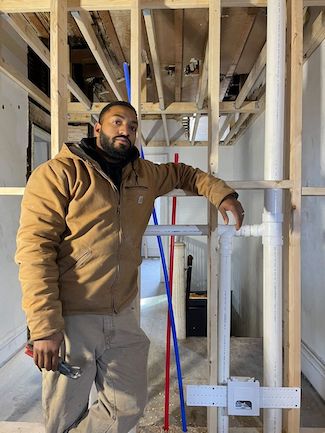 When he’s not competing in his bowling leagues, or spending time with his family, you can find Trey Young on Instagram @iplumbit documenting his residential plumbing work in new construction.
When he’s not competing in his bowling leagues, or spending time with his family, you can find Trey Young on Instagram @iplumbit documenting his residential plumbing work in new construction.
And his Instagram success is not only in the work he shows off, but I have to think that it’s in the music he selects to accompany the posts. ”Some songs I pick for videos may be ‘trending’ sounds or songs on Instagram at the time, but most of the music comes from my personal catalog,” says Young. “I like to believe I have a good ear for music that adds something to the project I’m showing off.”
The Beginning
Young got his first taste of plumbing working for Plumbing Plus, St. Louis, during summer break of senior year of high school. “Plumbing Plus was performing a sewer repair for a rental property for one of my parents, so I approached owner Matt Baese and asked if they needed any help, and the rest was history,” says Young.
After a short stint in college for website development, Young started working for Plumbing Plus full time a few years after high school as a laborer, and earned an apprenticeship shortly after. “I dabbled in website development for a bit, and it just wasn’t paying what plumbing was paying, even at senior levels,” recalls Young.
After three to four years working side by side with master plumber Eric Pruitt, “I began working solo and eventually created an Instagram to document my work,” says Young.
Hard Work Pays
According to Young, both Baese and Pruitt have shown tremendous patience with him during his rookie years, imparting invaluable information to be proficient as a plumber. Moreover, “I consider myself an advocate for the trade, imparting need-to-know information to assist others in making an informed decision on whether the path of plumbing will best suit them,” says Young.
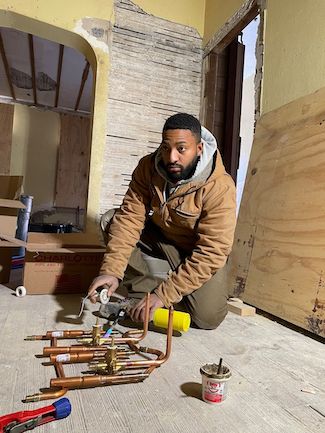 Yet, there is a misconception that trade work is repetitive, unforgiving manual labor for a meager salary. This misconception starts early with most kids, says Young, reinforced through unrealistic depictions on TV shows, movies and cartoons, etc. “It’s always been my opinion that the industry should focus on more outreach programs directed toward elementary school as much, if not more, than high schools to combat that misconception early,” says Young.
Yet, there is a misconception that trade work is repetitive, unforgiving manual labor for a meager salary. This misconception starts early with most kids, says Young, reinforced through unrealistic depictions on TV shows, movies and cartoons, etc. “It’s always been my opinion that the industry should focus on more outreach programs directed toward elementary school as much, if not more, than high schools to combat that misconception early,” says Young.
Work ethic is key to the trades, with traits such as dedication, integrity, punctuality and a willingness to learn mandatory. “’Hard work pays off’ may be a tad cliché in the year 2023, but it has always been the best intro to anyone considering a career in the trades,” says Young.
From a hornet’s nest inside a rehab home the size of a large yoga ball, to spiders the size of a small hand, “I’ve run across some pretty wild jobs,” says Young. But Young says he enjoys plumbing so much—being in different sites working on different jobs every single day. “Whereas with a corporate job, you are in the same cubicle, drinking the same cup of coffee, looking at the same computer, day in day out,” emphasizes Young.
Moreover, “the best reward is completing a job beyond expectations and bringing visible relief and or joy to someone who has been dealing a major plumbing issue for days, if not weeks.
Getting Connected
Social media, and Instagram in particular, has helped Young become a more versed plumber by introducing him to new products, tools and methods. “I’ve also had the opportunity to virtually meet hundreds of like-minded tradesmen, some even in person through company ambassador programs or people recognizing me at the local plumbing supply house,” says Young.
The Next Step
How does Young balance his quest for the ever-elusive perfect 300, family time and work? “Unfortunately, I find myself asking the same question because work takes up the majority of my time lately. After recently earning his Journeyman’s License, “setting the groundwork to eventually venture off on my own demands most of my leisure time,” says Young.

Buffalo Grove, Ill. — This past week, a tragedy occurred in the plumbing industry. On a jobsite, in someone’s front yard, a plumber died as a result of being buried alive due to a trench collapse. Twenty-seven-year-old Nikodem Zaremba was killed when the 8-ft.-deep trench he was working in collapsed on top of him. Zaremba Read more
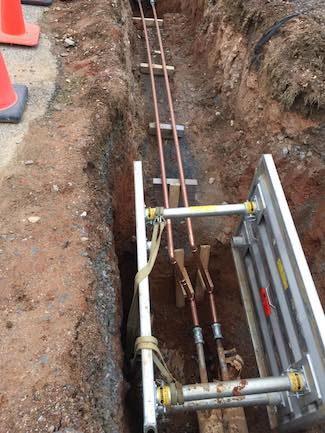
The shallow trench box was employed because the walls were unstable following soil saturation from a year’s long hydronic leak. Didn’t trust the dirt, but no trench collapse happened. Waste of time and money? No, no, and no. Why not? Think about the need to kneel beside the piping to make the connections and braze the copper joints then add insulation. That puts the employee below the top of the trench where a collapse would have the potential to engulf the employee under several tons of earth. The copper piping runs to an outdoor makeup air handler with 100% outdoor air for the laboratory at the city sewage treatment plant. Image: Dave Yates
Buffalo Grove, Ill. — This past week, a tragedy occurred in the plumbing industry. On a jobsite, in someone’s front yard, a plumber died as a result of being buried alive due to a trench collapse. Twenty-seven-year-old Nikodem Zaremba was killed when the 8-ft.-deep trench he was working in collapsed on top of him. Zaremba was co-owner of Rooter Solutions.
OSHA is currently looking into this and has opened a formal investigation into the circumstances. According to initial results, the site did not appear to have the necessary safety precautions to keep the accident from happening.
On the recent Appetite for Construction podcast, Mechanical Hub friend, Dave Yates, told the story back in 1972—the first week on the job as a young tradesman—he was called to a nearby jobsite to help three plumbers to safety by digging them out of a collapsed trench. Unfortunately, one was already dead when he arrived. The other, a couple of feet away, was buried up to his armpits. They were able to extract the other two workers to safety.

This muddy ditch was for an inner-city library where the cast iron was rotted out and raw sewage was running into their basement. A muddy sloppy mess and we were ensuring no mudslides into the ditch. Not deep enough to require shoring, but OSHA does state the ditch/trench is to be inspected by a “qualified” person to determine if shoring is needed when ditch/trench is under 5′ deep. Image: Dave Yates
Survive or not, says Yates, being buried in dirt for an extended period of time can cause major health issues, including complications called Compartment Syndrome, a condition that occurs when the pressure within a compartment increases, restricting the blood flow to the area and potentially damaging the muscles and nearby nerves.
“Victims of a cave-in are in grave danger even if they are not totally buried, and can still breathe. Circulatory problems, Compartment Syndrome, clotting, and other issues can be life threatening or cause serious injury,” commented Tim Doran on Facebook.
Listen below to hear Dave’s conversation on the podcast:
From 1979 to 2019, Yates had employees and bore a responsibility to ensure they had full-time work and would return home to their families safe each day. “Most had never worked for anyone who required the use of shoring. Even our excavators did not have shoring when we first looked at using them as subcontractors. Without either renting it or buying their own, they could not work for us. I told them they could charge extra for shoring because it was an expense for them just like any other job site cost,” said Yates.
Fifty years later, from Yates’ recollection of that day to present day, it seems that there are those that still don’t heed the best given. We pray for Zaremba’s family, and stay safe out there.
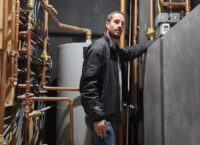
A Rolls Royce with a Veto Pro Pac tool bag in the trunk. Now that’s pretty drippy. For Moe Hirsch, Moes Consulting and Mechanical Services, Rockland County, N.Y., his bucket list item is a good representative mix of work and swaggy. Hirsch basically started off in the trades when he joined his cousins, who were plumbers Read more
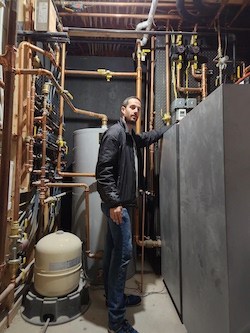 A Rolls Royce with a Veto Pro Pac tool bag in the trunk. Now that’s pretty drippy. For Moe Hirsch, Moes Consulting and Mechanical Services, Rockland County, N.Y., his bucket list item is a good representative mix of work and swaggy.
A Rolls Royce with a Veto Pro Pac tool bag in the trunk. Now that’s pretty drippy. For Moe Hirsch, Moes Consulting and Mechanical Services, Rockland County, N.Y., his bucket list item is a good representative mix of work and swaggy.
Hirsch basically started off in the trades when he joined his cousins, who were plumbers, for a few days and he immediately loved the excitement. Eventually, when things began to slow down, “I went out on my own using the heating knowledge I had learned. I had the mentality that if someone was going to figure it out, it might as well be me.”
From there, Hirsch grew into a plumbing, heating and cooling company, and two years ago began distributing and installing Cummins generators. Currently, the company focuses on the mechanical trades but offers property services to its clients as well.
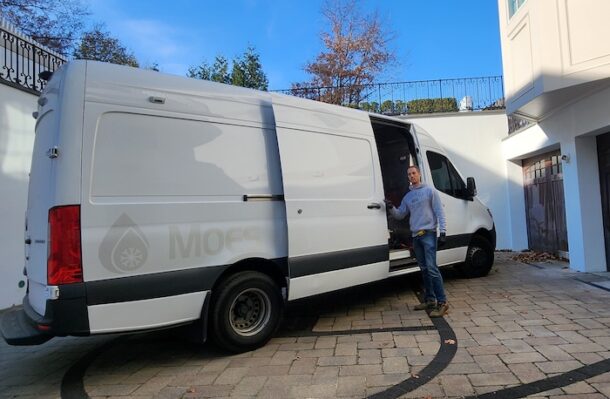
Hirsch says he’s learned a lot from so many that narrowing it down would be impossible to credit everyone. Having said that, “The trade leaders for me were Dan Holohan, Mark Eatherton, Bob Hot Rod Rohr and John Siegenthaler. In the business world, Grant Cardone and Brandon Dawson have showed me what my true potential is. You really can learn something from everyone,” says Hirsch.
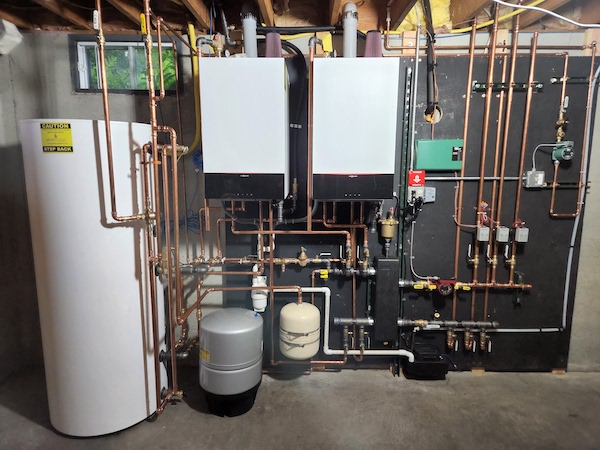
In addition to meeting and helping so many people, another rewarding aspect of the trades is that it can be very profitable. And while you can be in the trenches working hands-on, says Hirsch, you can use your skills to be a great manager, assistant or other asset to a company. “It’s not all wrenching knowledge. Business to me is 33% knowing your trade, 33% knowing business management, fact finding and sales, and the other 33% is just being a genuine, kind person.”
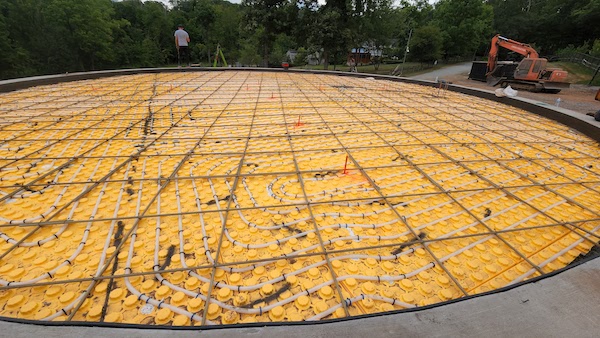
How can the PHVAC industry do a better job attracting people to the trades? Hirsch, you could say, practices what he preaches. As he prepares for every job, Hirsch makes sure he has his MacBook, latest smart phone, his personal CO detector and his loaded Veto bag, and says, “Make trades cool again; show kids the cool stuff. If they’re into muscle cars show them a tradesman driving his mustang to work. If they’re techy, show them someone performing a diagnostic using a computer.”
 Moreover, social media, whose influence on young people can’t be denied, has opened many doors for tradespeople. “Social media is a free outlet to showcase your work—you can share your work, learn from others and link up with locals. Plus, social media can make the sale easier. The client feels they know you and is more willing put their trust in you,” says Hirsch.
Moreover, social media, whose influence on young people can’t be denied, has opened many doors for tradespeople. “Social media is a free outlet to showcase your work—you can share your work, learn from others and link up with locals. Plus, social media can make the sale easier. The client feels they know you and is more willing put their trust in you,” says Hirsch.
As far as balancing work/leisure time, “I don’t balance them,” says Hirsch. “I try to do both to the max.” And that includes spending time with his wife and kids, training his new Golden Retriever, Marshmallow, and, of course, bumping into clients and seeing their happiness.

Monumental concerns in the industry—from supply chain issues and inflation concerns to electrification and decarbonization—challenge contractors and manufacturers alike to be ready to rise above the fray. On September 28, Hurricane Ian, a Category 4 storm, hit the Florida coast, leaving a trail of destruction, loss of life, and people without power, and a place Read more
Monumental concerns in the industry—from supply chain issues and inflation concerns to electrification and decarbonization—challenge contractors and manufacturers alike to be ready to rise above the fray.
On September 28, Hurricane Ian, a Category 4 storm, hit the Florida coast, leaving a trail of destruction, loss of life, and people without power, and a place to live. The following week, after the residual rains moved through the South Atlantic states, PHCC CONNECT attendees, exhibitors and staff were fortunate to convene in Charlotte, N.C. for the annual show.
One of the many bright spots during CONNECT was the annual Industry Perspective panel—back by popular demand—which featured some of the industry’s finest: Elisabeth Sutton, Director—Marketing, Professional Channel, Kitchen and Bath Americas, Kohler; Bruce Carnevale, President and CEO, Bradford White Corporation; Randy Roberts, Vice President of Sales and Marketing, Rheem; Scott Teson, Senior Vice President of Skilled Trades, Milwaukee Tool; Jeff Fetters, Chairman, Federated Insurance Companies.

As I prepared for the panel, I would have been remiss if I didn’t mention those people still struggling in the Sunshine State. And the more I thought about what was happening in Florida, the more I could draw some symmetry of what has been plaguing our nation the past few years.
Things like supply chain. Are the right people getting what they need in Florida? Labor shortage. Do we have the manpower to provide assistance? Or, do we have the proper infrastructure in place? What about electrification? I mean, I had just seen a meme that said something like, “2.8 million people without power, time to fire up the Teslas.” Now that could be perceived as a bit naïve, but when you look at California, for instance—declaring no new gas cars sold in the state by 2035—concerns about adequate infrastructure are real.
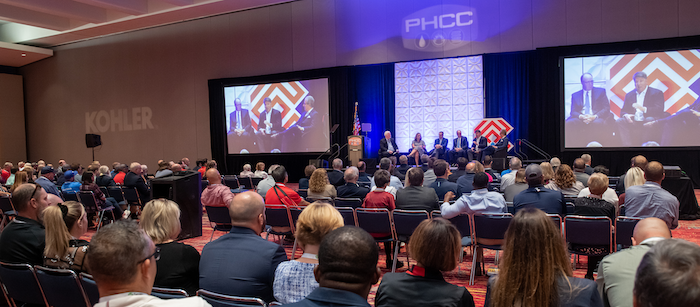
It’s a good thing we had the right people on the panel to address such concerns. I learned that Federated Insurance sent “catastrophic teams” to Florida to help. “We needed to have boots on the ground as quickly as we could,” said Fetters. “Businesses need to have high expectations for employees to remain safe. Disasters can strike at any time. A risk management culture has to perpetuate through every single employee,” said Fetters.
As a side note, how can contractors prepare for such an event? “Make sure you sit down with an agent to see what it would cost to replace your business, and any personal property in the event of any potential catastrophe,” said Fetters.
Supply Chain Woes
Nonetheless, supply chain issues dominate conversation almost daily among working contractors. “We are still challenged by supply chain issues, and it has forced us as a company to better manage our supply chain. We do things differently now,” said Carnevale.
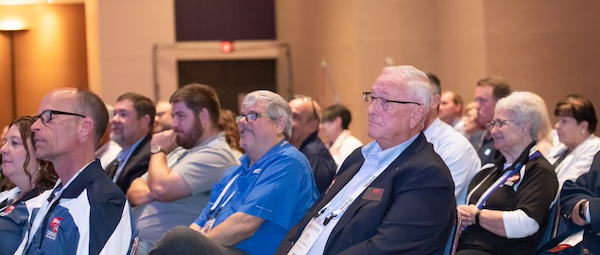
As a manufacturer, you’re never getting what you need from plastic resins overseas, nickel component slowing lines down to component issue challenges,” said Roberts. “This makes us be creative on managing supply chain.”
According to Sutton, “We see that luxury side of remodeling is still high. The thing impacting supply chain is that distributors are receiving more products, managing inventory for distributors.”
Investments in People/Training
Milwaukee Tool has made an $400 million investment in domestic manufacturing. “We want to control our own destiny,” said Teson. Yet, Teson pointed out that with more commercial construction projects on the books, how do we find the right people to support those jobs? “We need skilled tradesmen and women to support those efforts,” said Teson.
Sutton suggests that technology in products is a viable avenue to attract the younger generation. C’mon, who doesn’t like the way an impact driver or press tool feels in their hands?

Elisabeth Sutton
“We also need to attract people to the industry to show them how wonderful it is, and that should not be specific to one type of person,” said Sutton. “We need more diversity, not just one profile,” continued Sutton.
“This is a fantastic industry, and once people are a part of it, they stay,” said Roberts.
Yet, once in the building, how do we get people to stay? Training. “It has always been a critical part of what we do. We have been very flexible with our training—we will take it to customers and also bring them into our facility,” said Carnevale.
How do employees continue to get better year after year? The panel agreed that it’s about establishing a culture of training in your office. This gives employers a competitive advantage in keeping people and attracting people because they will be seen as investing in them.
Electrification is the Buzzword
According to Carnevale, topics surrounding electrification loom large. For example, will the infrastructure be in place to support the new products? How will the infrastructure build out in a very short time? This puts the consumer in a bad position and puts our national security at risk—i.e., supply chain issues and the country’s fragile relationship with China.
“Electrification and decarbonization, whether we like it or not, we need to be prepared. We have the products available,” said Roberts.
Government Regulations
Carnevale noted that he receives email relating to a regulatory issue almost daily. “The DoE is extremely active, and there’s a requirement that is in the foundational law that once the DOE sets a new minimum efficiency standard, it cannot go backward.”

The panel consisted of (from l to r): John Mesenbrink, moderator; Elisabeth Sutton, Kohler; Bruce Carnevale, Bradford White; Randy Roberts, Rheem; Scott Teson, Milwaukee Tool; Jeff Fetters, Federated Insurance.
According to Rheem’s Roberts, there is an “Install Date Standard for Air Conditioning Systems” looming and, “Contractors will be breaking the law if they install an AC system not rated to the new standard come January, 1 2023.” Efficiency standards dictate that sell through of existing systems will be allowed in the northern states if the product was manufactured prior to January 1, 2023. This is not the case in the South and Southwest. AC systems must comply with the 2023 federal minimums to be installed after January 1, 2023. Current Heat Pump systems can continue to be installed in all regions as long as they were manufactured before January 1.
And who is enforcing this, you may ask? “Contractors and distributors will be self-policing installations to make sure they meet the new standard. In addition, manufacturers cannot ship products that don’t meet the new standards or allow them to be registered for warranties if installed after January 1. A standard based on install date will ultimately create inventory challenges for everyone in the industry,” said Roberts.
That Dreaded ‘R’ Word
There are whispers of the “R” word and I don’t think it means that “relief” is on the way anytime soon. From inflation to fuel prices, contractors have faced economic hardships that may continue to linger into 2023, and beyond. “We’ve been bearish on the economy longer than the financial press has been,” says Carnevale. “It is pretty clear that we are in a recession. There have been some positive signs, the fed is getting aggressive, and we will see significant drop in housing market.”
Carnevale continued that he is concerned about the macro economy, even though there are some good signs. “Labor shortages continue to be a vexing problem, and we need to focus on the labor participation rate compared to pre-pandemic, meaning there are a lot of people who are choosing not to work,” said Carnevale.
Teson said that interest rates are the real threat. “We’re watching it very closely and trying to make decisions that will make us come out stronger than our competitors.”
Carnevale added that there is a very distinct demand for discretionary vs. non-discretionary products. In the end, “As the demand starts to soften, we are subject to the laws of supply and demand. It is not going got back to where it is pre-pandemic, but will see some softening on pricing.”
Roberts says that overall, we should see a correction. “How do you position yourself to come out stronger than you go into it?” That’s the question.
For more info, visit PHCC.

The International Association of Plumbing and Mechanical Officials (IAPMO) was pleased to have participated in the Plumbing and Heating event at WorldSkills Competition 2022 Special Edition (WSC2022SE), Nov. 2-4 at GROHE Technikum in Lahr, Germany. The competition showcased national champions from 20 WorldSkills member countries. IAPMO CEO and World Plumbing Council (WPC) Deputy Chair Dave Read more
 The International Association of Plumbing and Mechanical Officials (IAPMO) was pleased to have participated in the Plumbing and Heating event at WorldSkills Competition 2022 Special Edition (WSC2022SE), Nov. 2-4 at GROHE Technikum in Lahr, Germany. The competition showcased national champions from 20 WorldSkills member countries.
The International Association of Plumbing and Mechanical Officials (IAPMO) was pleased to have participated in the Plumbing and Heating event at WorldSkills Competition 2022 Special Edition (WSC2022SE), Nov. 2-4 at GROHE Technikum in Lahr, Germany. The competition showcased national champions from 20 WorldSkills member countries.
IAPMO CEO and World Plumbing Council (WPC) Deputy Chair Dave Viola relished the opportunity to present medals to the winning champions, concluding a thrilling three-day competition at the celebratory closing ceremony on Saturday, Nov. 5. Viola was joined by IAPMO Chief Administrative Officer and WPC Secretariat Gaby Davis, as well as IAPMO President David Gans and Vice President Steve Panelli, both experiencing a WorldSkills competition for the first time.
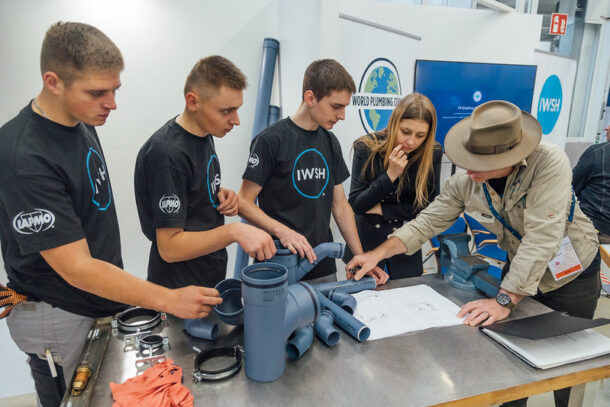
Plumbing and Heating competitor Florian Bliem of Austria captured the gold. Joint silver medals were awarded to Tom Pean of France and Marton Offner of Hungary, and the bronze medal was won by Tai-Yu Chen of Chinese Taipei.
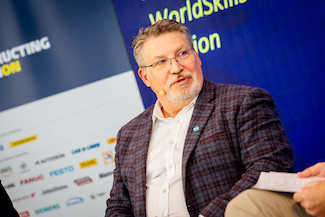
Dave Viola
Indicative of the high standard of this year’s long-awaited, rescheduled competition, six additional entrants were awarded medallions for achieving a final assessment above WorldSkills’ benchmark for excellence: Sangyeop Kim (Korea), Saku Hurtig (Finland), Luca Herzog (Switzerland), Connor Cruden (United Kingdom), Fabian Grün (Germany), and Yuto Itahashi (Japan).
“What we are seeing today at WorldSkills is the best of the best, showcasing their skills and inspiring other people to do their best quality work,” Gans said. “We are looking at the future of plumbing, and plumbers. These are the young men and women who are going to take plumbing to the next level and help change the world.”
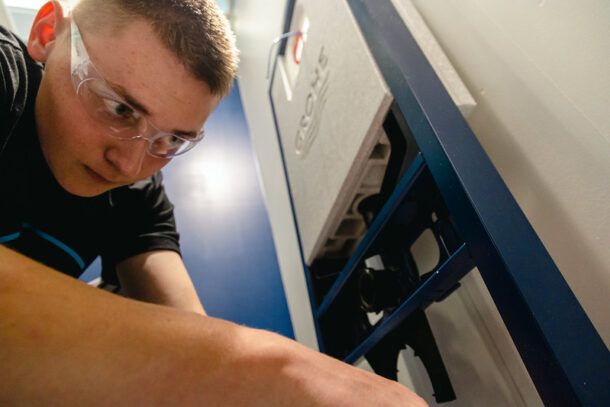
The event also showcased a new Plumbing Champions training activity, sponsored by the World Plumbing Council and delivered by the International Water, Sanitation and Hygiene Foundation (IWSH), charitable arm of The IAPMO Group. Three young students, accompanied by one mentor and one interpreter — all from Ukraine — were sponsored to participate in an educational workshop completing the same test project as was tackled in the WorldSkills competition, guided and supported by technical experts from IAPMO and GROHE.
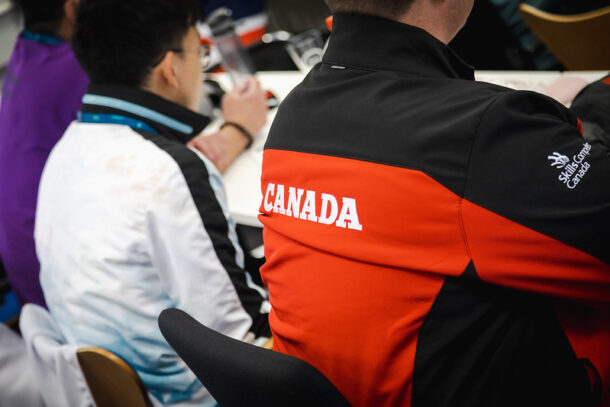
Mayor of the city of Lahr Markus Ibert paid a special tribute to the Ukrainian group in his closing remarks.
“I would like to thank all participants who made this special event possible, and I wish you all the best for your ongoing life; success, and peace — especially to our guests from Ukraine. To you, to your families and your neighbors, have a good time, in peace, and with benefits, for a good life.”
The biennial WorldSkills international competition returns in September 2024, where it will be hosted in Lyon, France.
For more information about WorldSkills, visit https://worldskills.org/.
